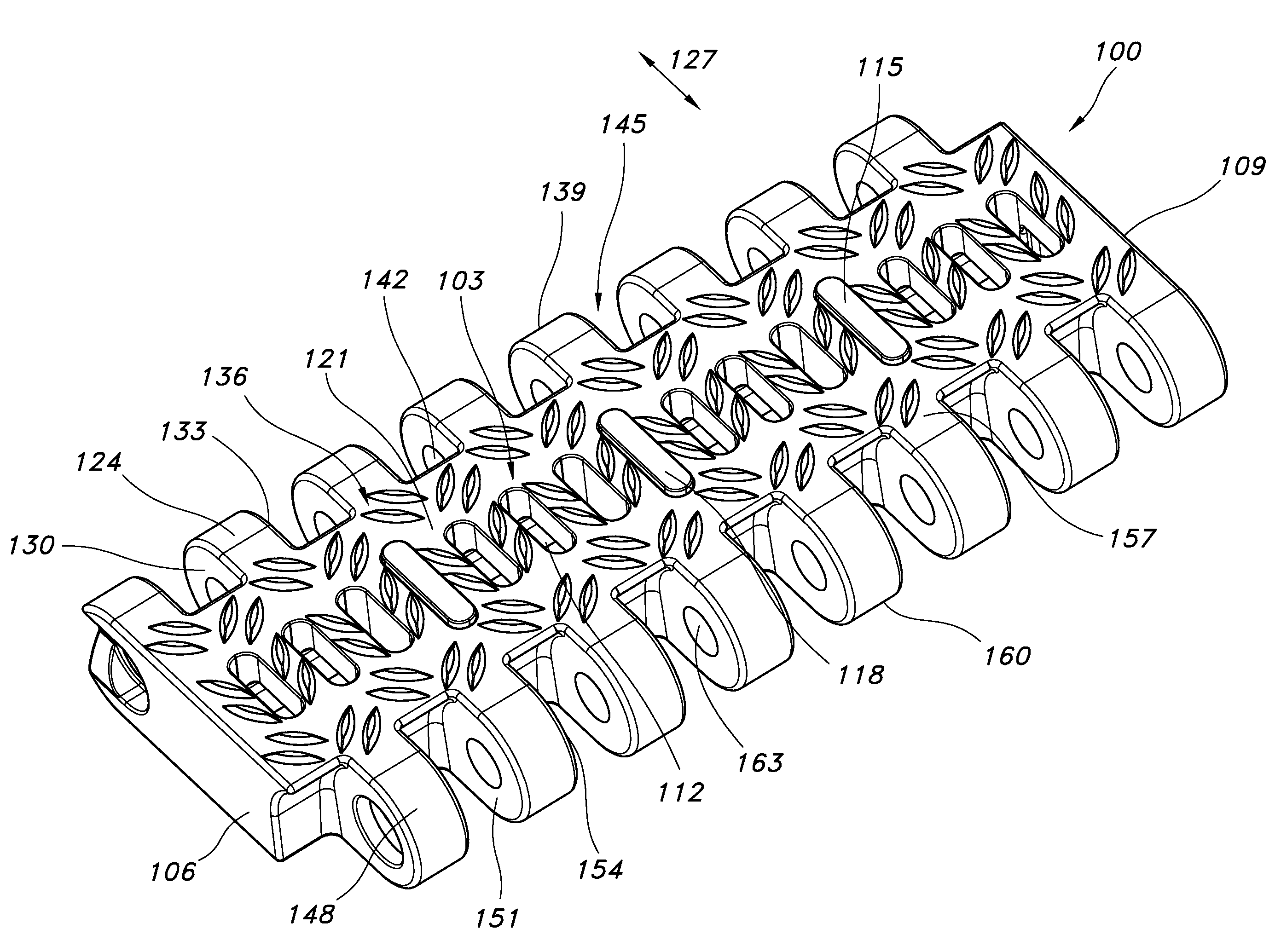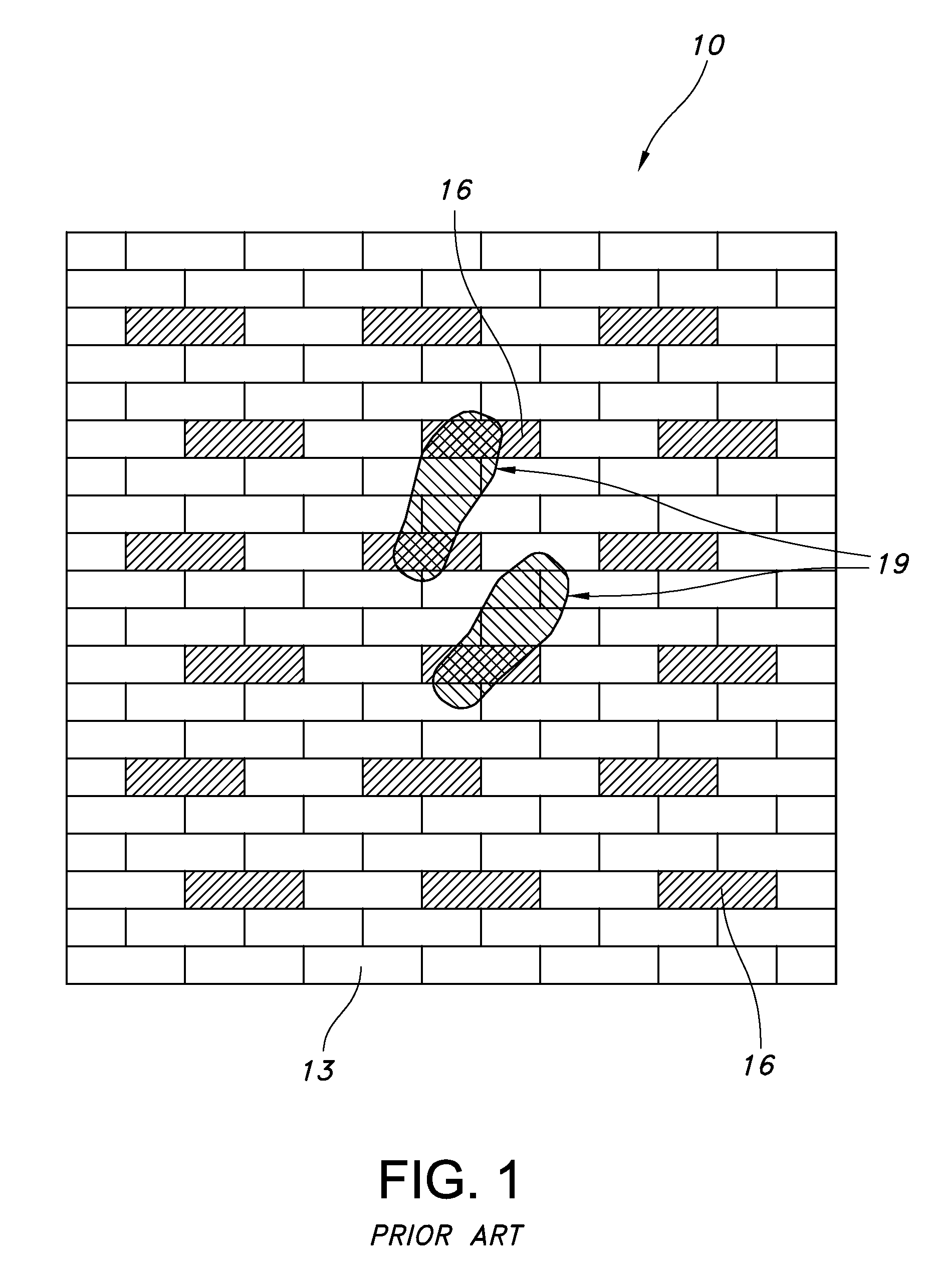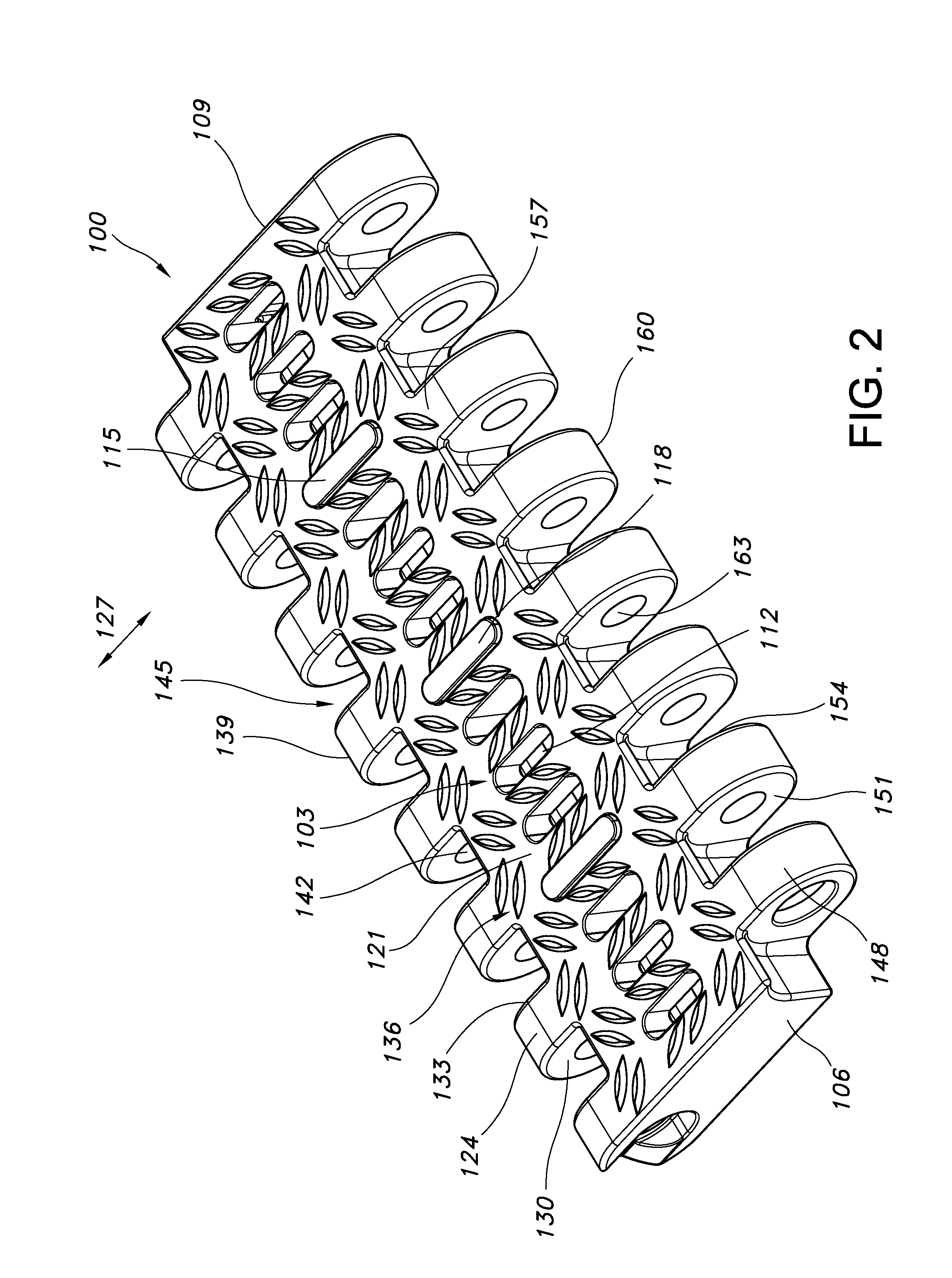Electroconductive modular belt
- Summary
- Abstract
- Description
- Claims
- Application Information
AI Technical Summary
Benefits of technology
Problems solved by technology
Method used
Image
Examples
Embodiment Construction
[0012]Referring to FIGS. 2-5 generally and initially to FIG. 2, a belt module 100 has an intermediate section 103 extending from a first side edge 106 to a second side edge 109. The intermediate section 103 may be provided with slots 112 defined therein. The slots 112 may function to remove water or debris from the assembled belt. The intermediate section 103 also includes openings 115 for receiving plugs 118. The plugs 118 are constructed from electroconductive materials. A typical electrical resistance for materials suitable for the dissipation of static electricity is 102-105 Ω(Ohm). Generally, the resistance values for conductors is in the range of about zero to 105 Ω(Ohm), for dissipators is about 105-1012 Ω(Ohm) and for insulators is greater than about 1012 Ω(Ohm). The plugs 118 extend for a short distance above the top surface 121 of the belt module 100 such that contact with an item (not shown) supported on the top surface 121 of the belt is possible. The plugs 118 also exte...
PUM
 Login to View More
Login to View More Abstract
Description
Claims
Application Information
 Login to View More
Login to View More - R&D
- Intellectual Property
- Life Sciences
- Materials
- Tech Scout
- Unparalleled Data Quality
- Higher Quality Content
- 60% Fewer Hallucinations
Browse by: Latest US Patents, China's latest patents, Technical Efficacy Thesaurus, Application Domain, Technology Topic, Popular Technical Reports.
© 2025 PatSnap. All rights reserved.Legal|Privacy policy|Modern Slavery Act Transparency Statement|Sitemap|About US| Contact US: help@patsnap.com



